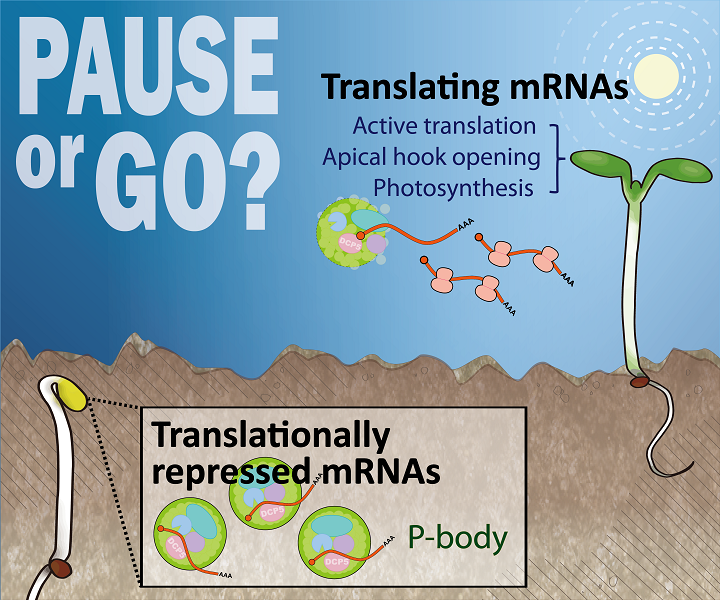[Shu-Hsing Wu] Over my p-body! Processing bodies regulate selective translation of mRNAs before and after light illumination
POST:Germinated plant seeds are often buried in soil. In order to protrude from soil, young plant seedlings have to elongate their hypocotyls and maintain the apical hooks for the protection of apical meristem, a developmental process called skotomorphogenesis. After reaching the light environment, young seedlings will open their cotyledons and initiate the chloroplast development for photosynthesis. This process is called photomorphogenesis.
We previously found that light enhances the translation of thousands of mRNAs during the dark-to-light transition in Arabidopsis young seedlings. About 40% of these mRNAs have comparable abundance before and after light treatment, which implies widespread translational repression in dark-grown seedlings.
Here we found that processing bodies (p-bodies) are responsible for this translational regulation. P-bodies, the cytoplasmic granules, can be detected with tagged fluorescence proteins under microscopes. P-bodies contain non-translating mRNAs and RNA-binding proteins and can balance the storage, degradation and translation of mRNAs. Our study shows Arabidopsis mutants defective in p-bodies formation show abnormal skotomorphogenesis and photomorphogenesis. In-depth characterization demonstrated that p-bodies function as mRNA reservoirs in dark-grown seedlings. When seedlings protrude from soil, light triggers a reduced accumulation of p-bodies to release the translationally stalled mRNAs for active translation to generate proteins essential for photomorphogenesis, leading to a timely photomorphogenic development (Jang et al, 2019).
